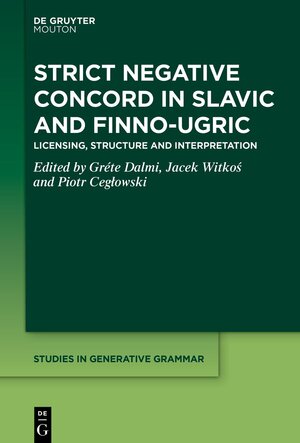
Strict Negative Concord in Slavic and Finno-Ugric
Licensing, Structure and Interpretation
herausgegeben von Gréte Dalmi, Jacek Witkoś und Piotr CegłowskiExpressing negation is a universal property of all human languages. There is considerable variation, however, in the exact ways negation materializes cross-linguistically. Strict Negative Concord differs both from the Negative Polarity Item strategy and the Asymmetric Negative Concord strategy in that the sentence becomes negative only if the sentence negator is overtly expressed in it, irrespective of how many negative expressions are used.
The central aim of this book is to describe Strict Negative Concord in some Slavic and Finno-Ugric languages. In particular, the volume gives an insight into the forms Strict Negative Concord manifests itself in Russian, Polish, Czech, Slovenian (Slavic), Finnish, Hungarian, Mari (Finno-Ugric) and the closely related Selkup (Samoyedic) to a wide linguistic community. It aims to create a platform for comparison with similar phenomena in well-described European languages.




